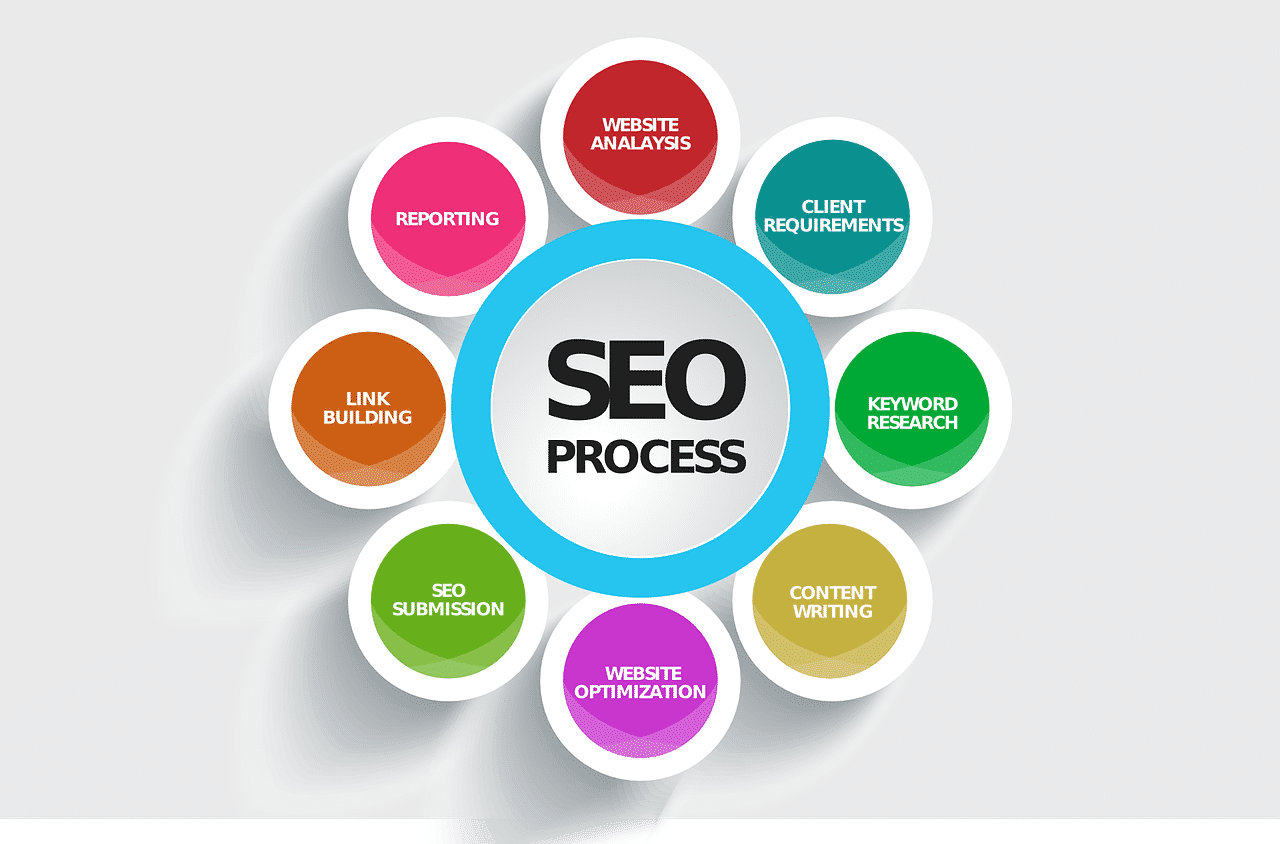This article has been contributed by Kyle McDermott.
Experts predict that retail eCommerce sales will hit $4.13 trillion by the end of 2020. This rapid growth isn’t surprising, given the continuous shift of consumer behavior towards digitalization. Also not surprising is the fact that online consumers have become more demanding and expect online stores to deliver impeccable shopping experiences on all devices, all the time.

For new eCommerce startups, this may sound daunting. But if you know which marketing tactics to use, your online store will be turning sales in no time.
So, if you’re going to set up an online store, here are 7 top-notch eCommerce tactics to leverage to launch and grow your business.
Top 7 eCommerce Strategies
1. Marketing Automation
Marketing automation strategies can vary in their purpose, but their main benefits are relatively consistent. Automating your marketing is just about guaranteed to save you valuable time, while improving your brand’s customer experience and engagement. Automation tools allow you to convert users into prospects faster by streamlining marketing processes at every level.
Let’s start with the fact that automation enables you to schedule delivery of social media content that engages the passive segment of your audience. When they receive such messages with customized or exclusive offers, there is a chance that they’ll start their purchase journey immediately.
Similarly, automated email marketing is recommended when it is important to re-engage past customers and prospects. By distributing relevant promotions and product news, you will manage to win back some long-lost customers, bringing in more sales.
Another advantage of marketing automation is customer segmentation. Automated customer tracking lets you classify your website or mobile app users into segments based on their level of brand awareness. For example, unknown shoppers can be identified and delivered relevant content, whereas known shoppers will see recommendations that match their purchase history.
Likewise, depending on their characteristics and behavior, you will know what type of offer will work best to stimulate consumer behavior and encourage them towards placing an unplanned order.
Audience segmentation backed by marketing automation tools gives you valuable knowledge about each segment’s preferences and expectations. These insights are necessary to know when to apply upselling and cross-selling techniques that will allow you to increase profits without necessarily growing your customer base.
2. Advanced Analytics
Marketing analytics strategies are designed to drive business growth through data-driven decisions. The idea of advanced analytics is to analyze consumer behavior and each customer’s journey.
Effective analytics help you identify the marketing channels that best drive sales for your business, and when and how your audience tends to interact with your brand. It’s essential to know which marketing channel drives your sales performance most in order to prioritize it.
For example, MMM (marketing-mix modeling) is an effective tactic to track medium to long-term changes in buyer behavior and user interactions. In particular, it helps you discover how seasonal changes and other external forces like competitor promotions shape your customers’ purchase decisions.
Data analytics tactics are generally most needed when your business lacks well-defined buyer personas, or at least the insights needed to truly understand your customers and target them with precision. For instance, web traffic analysis will let you see where the majority of your customers come from, and accurately assess their user activity (session length and frequency, time, screen flow, etc). These KPIs reveal the basic patterns of your audience’s behavior, based on which you can make smart investment decisions.
The use of marketing analytics tools enables entrepreneurs to base their business strategies on accurate and objective data. Rather than merely having assumptions in mind, startup owners can leverage solid evidence that will guide them in the right strategic direction. Therefore, data analytics is an excellent way to optimize your digital marketing spending.
3. Personalization
Personalization is the basis of the customer-centric approach that is prevailing in the global market now. Today’s eCommerce startup owners know well that the only sure-fire to compete with giant online retailers like Amazon or eBay is to offer users a customized product or service which perfectly fits with their needs.
Personalized shopping experiences are the key to high sales figures. There are many ways to do it, but the best shortcut requires implementing ML (machine learning) generated or AI-based tools that let you tailor the customer journey and live up to a prospect’s expectations.
The simplest example of how personalization works is geo-location targeting, whereby your website’s settings change in accordance with the visitor’s location. If your prospect comes from the US, they expect to see information in English, which means that you should enable relevant auto currency and language settings. As far as today’s consumer is concerned, this personalization tactic is expected from eCommerce companies that work with a global audience.
The next step in eCommerce personalization is tailored recommendations based on the user’s search history. This is the primary strategy that Amazon leverages to make its users surf their marketplace longer, successfully generating 35% of the site’s sales. The online merchant relies on ML and AI algorithms that analyze customers’ purchase histories and predict their next buy.
Personalized offers consistently prove to be a highly effective way of engaging customers. Deals and discounts have always been popular, but when a business tailors them to each individual user, it’s not surprising that 91% of consumers say they’re more likely to shop with that brand than a competitor that offers generic discounts.
4. Content and SEO Strategy
As much as technology helps you to create and manage a user-friendly mobile app or website, it’s equally important to focus on your content. For that to happen, you should come up with a relevant SEO and content strategy that will enable your brand promotion.
The right choice of SEO tactics will generate organic traffic that will pay dividends well into the future.
SEO and content strategies are usually multi-faceted. You’ll usually get the best results when you manage to put effort into numerous aspects of SEO optimization, such as keyword tags, internal linking and content diversity, all of which will increase traffic to your eCommerce website or marketplace.
If you know your target audience well, you should start creating a content plan by defining topics that will genuinely resonate with your customers. Then it’s time to research relevant keywords to base your content on.
Next, determine the channels on which you’ll distribute your content. Plenty of it will be housed on your own platform and you’ll drive traffic to it via emails to existing contacts, but you’ll best reach new audiences by posting your content on social media. These channels will be informed by your customer personas, namely, where they spend their time online.
When it comes time to actually produce your content, be sure not to oversaturate it with your target keywords. This is an old school, rookie error, which will deter readers and could possibly damage your SEO efforts. Also be sure to invest time into using quality visuals, including videos. In the case of eCommerce startups, customers expect to see high-resolution pictures of the products you’re selling or video demonstrations of how to use your products.
5. Chatbots
Chatbots are among the top trending technologies for eCommerce companies right now. They are most widely used in the role of conversational assistants that interact with customers and turn them into leads. Here, the chatbot’s capacity is focused on building a good connection with a customer on the first contact and creating an interest in your product or service.
The advantage of chatbot use for eCommerce startups is that they can cut labor costs whilst performing multiple functions, including data collection, customer interaction and acquisition. They are equally good at assisting shoppers in placing their orders or making payments. In brief, they are fit for pretty much any activity involved with customer support.
There are many ways to integrate a chatbot into your business. One way is to hire programmers for your startup that will design a custom chatbot that will perform exactly the business functions you need. However, if this solution seems too time-consuming or costly, you could instead use chatbot builders that let you use a ready-made chatbot with your business model.
Before integrating a chatbot with their own eCommerce sites, many startups begin with tying their chatbot to social media such as Facebook, Instagram or WhatsApp. This allows potential customers to interact with the brand on their chosen platform, in an environment they’re comfortable with. It can also shorten the average session time, thus increasing the level of customer satisfaction.
This practice is popular not only with new companies but also big players like Uber, which uses a Facebook chatbot integration, and Domino’s pizza, whose chatbot can be accessed via Amazon Echo.
6. Influencer Marketing
A successful influencer marketing strategy can be a huge bonus for eCommerce startups in their first year of life. At this point, brand awareness is close to zero, and the main marketing aim is to make the brand visible to the public. Sometimes, traditional and digital advertising are too costly and not necessarily effective enough.
The idea of influencer marketing lies in recruiting one or multiple social media bloggers whose existing audience fits the profile of your new brand’s customers. You partner with the chosen influencer to promote your brand and products directly to their audience, thus raising brand awareness to a highly relevant audience. Provided you choose the right influencer with the right audience, your brand will resonate with their followers, and they’ll share your offerings with their connections, exponentially increasing your reach.
Since well-established influencers have loyal audiences that have faith in what they say and post, having them on your marketing team will greatly speed up the process of brand promotion and building brand awareness. Startups are advised to collaborate with micro-influencers with under 100,000 followers. They will bring more value to your business growth than bloggers with over 1,000,000 in their army of followers, as micro-influencers have a higher level of confidence and a larger proportion of users that are willing to pay. Moreover, you can combine paid social ads with influencers that will jointly show your brand to the users that can be potentially interested in what you offer.
Influencer marketing campaigns can be a good start for any company that is just starting out on carving out a niche in the market. This type of strategy is part of a customer-centric approach that allows eCommerce businesses to establish a good reputation and start providing excellent customer experience from day one.
7. Affiliate Marketing
The key advantage of affiliate marketing is that you can boost your sales by engaging third parties in your marketing process. Affiliates are simply individuals or companies that promote your product or service, and in return you pay them a commission on every sale made with their involvement.
Reward commissions are discussed with every affiliate individually as there are different ways to compensate them.
a. Pay Per Sale
This will be most beneficial for your eCommerce startup as you only pay the affiliate a commission after a customer makes a purchase. In other words, there are no expenses unless you make a sale.
b. Pay Per Click
In this case, commissions depend on web traffic generated by users clicking on the affiliate’s link to your site. This tactic is suitable for companies that pursue a variety of branding goals, besides the need to boost profits.
c. Pay Per Lead
This is the most complex affiliate program and is widely employed in SME. The affiliate’s role is to encourage customers to fill out a contact form, which will result in closer collaboration between a prospect and a brand.
To put it simply, affiliate marketing tactics are intended to help you scale your efforts and positive ROI outcomes even when your clientele is not established yet. By making the right partnerships, you can quickly catch up with other eCommerce players and gain a solid position in the market.
No Time Like The Present!
As easy as it is to jump into eCommerce these days, you should remember that this landscape has become more competitive than ever. With global players like Amazon, eBay and AliExpress, it’s challenging for new companies to build their marketing channels and gain a loyal audience.
However, with the tactics we’ve discussed, you will be able to compete successfully. It’s essential to start by selecting a few tactics that deliver enough traffic to your website, and to maintain consistency across your marketing channels. This approach will ensure you stand out and grow your eCommerce business.
_
About the author: Kyle McDermott is a web developer, blogger, blockchain enthusiast, and business analyst. He loves to write about new technologies, business news, and sports events. Kyle is also a proofreader at Computools.




